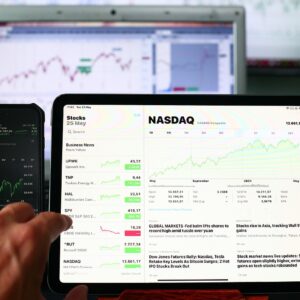Goldman Sachs has revised its forecast for a U.S. recession, reducing the probability to 20% just after it had raised it earlier this month. According to a report by Jenni Reid for CNBC, this adjustment comes in response to recent labor market data, prompting a reassessment of the U.S. economic outlook.
Per the CNBC article, earlier this month, Goldman Sachs increased its 12-month U.S. recession probability from 15% to 25% following the release of the U.S. July jobs report on 2 August 2024. The report revealed that nonfarm payrolls grew by only 114,000, falling short of expectations and down from June’s revised figure of 179,000. This disappointing data triggered concerns about the health of the world’s largest economy, leading to a brief but sharp stock market sell-off.
The weaker jobs report also activated the “Sahm rule,” an economic indicator that signals the onset of a recession when the three-month moving average of the U.S. unemployment rate rises at least half a percentage point above its 12-month low. Initially, Goldman Sachs cited this as a reason for raising the recession probability. However, the bank apparently reversed course on August 17, lowering the recession odds to 20% in light of subsequent data that showed “no sign of a recession,” as reported by CNBC.
This reassessment was driven by stronger-than-expected economic indicators, including a 1% increase in July retail sales—well above the forecast of 0.3%—and lower-than-anticipated weekly unemployment benefit claims. These positive figures contributed to a shift in market sentiment, which was reflected in a global stock market rally late last week, CNBC noted.
CNBC also mentioned that Goldman Sachs economists explained that the continued economic expansion would make the U.S. resemble other G10 economies, where the Sahm rule has been less predictive, functioning accurately less than 70% of the time. For example, smaller economies like Canada have experienced significant unemployment rate increases during the current cycle without entering a recession.
Claudia Sahm, the economist who developed the Sahm rule, shared with CNBC that she does not currently believe the U.S. is in a recession. However, she warned that further weakening in the labor market could push the economy into a downturn.
Goldman Sachs analysts suggested that a strong jobs report on September 6 could lead them to reduce their recession probability back to 15%, where it had stood for nearly a year before the recent adjustment. The bank also indicated that unless another negative surprise emerges in the upcoming jobs report, it expects the Federal Reserve to implement a 25-basis-point rate cut at its September meeting rather than a more aggressive 50-basis-point reduction. CNBC reported that market participants have fully priced in a September rate cut, with the odds of a 50-basis-point cut now reduced to just 28.5%, according to CME’s FedWatch tool.
Featured Image via Pixabay









